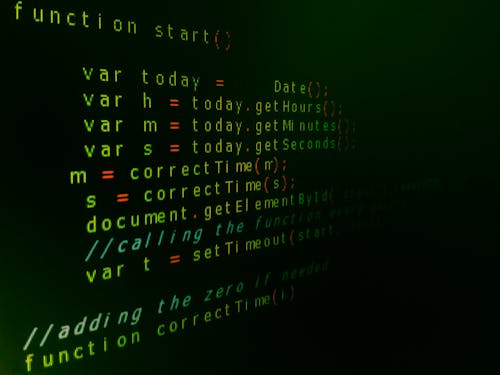
Introduction
Codes form the backbone of the digital world, translating human instructions into a language that computers can understand and execute. This article delves into the history, evolution, and impact of coding in computing, exploring how it has transformed from simple machine language to complex programming paradigms that drive today’s technology.
The Birth of Machine Language
The earliest form of coding in computers was machine language, a low-level language composed of binary code (0s and 1s). This language is the most basic level of code that a computer’s central processing unit (CPU) can execute directly. Machine language instructions are specific to a computer’s architecture, making them difficult for humans to write and understand.
Each instruction in machine language corresponds to a specific operation in the computer’s hardware, such as moving data between registers or performing arithmetic operations. Although machine language provides precise control over the hardware, its complexity and lack of readability led to the development of assembly language.
Assembly Language: Bridging the Gap
Assembly language emerged in the early 1950s as a more human-readable alternative to machine language. It uses mnemonic codes and labels to represent machine-level instructions, making it easier for programmers to write and debug code. Each assembly language instruction corresponds directly to a machine language instruction, allowing for efficient execution.
Assemblers, special programs that translate assembly language code into machine language, were created to automate this translation process. Assembly language remains in use today for tasks that require direct hardware manipulation or high performance, such as operating system kernels and embedded systems.
The Rise of High-Level Programming Languages
The 1950s and 1960s saw the development of high-level programming languages designed to simplify coding and make it more accessible. These languages abstracted much of the complexity of machine and assembly languages, allowing programmers to write code using more natural language constructs and mathematical notation.
Fortran (Formula Translation), developed in the mid-1950s by IBM, was one of the first high-level languages and was specifically designed for scientific and engineering calculations. COBOL (Common Business-Oriented Language), introduced in the late 1950s, was geared towards business data processing. These languages significantly increased productivity by enabling programmers to focus on solving problems rather than dealing with hardware details.
The Structured Programming Paradigm
The 1970s and 1980s brought about the structured programming paradigm, which emphasized the use of control structures such as loops, conditionals, and subroutines to create clear and maintainable code. This approach contrasted with the unstructured “spaghetti code” common in earlier programming styles, where the flow of control was often difficult to follow.
Languages like C, developed by Dennis Ritchie at Bell Labs in the early 1970s, embodied the principles of structured programming. C provided low-level access to memory while also supporting high-level constructs, making it both powerful and flexible. Its influence is seen in many subsequent languages, including C++, Java, and C#.
The Object-Oriented Revolution
The 1980s and 1990s saw the rise of object-oriented programming (OOP), a paradigm that models software as a collection of objects that interact with each other. Objects encapsulate data and behavior, promoting modularity, code reuse, and ease of maintenance. OOP languages like Smalltalk, developed in the 1970s, and later C++ and Java, became popular for their ability to manage complex software systems.
Java, introduced by Sun Microsystems in 1995, became particularly influential due to its platform-independent nature, enabled by the Java Virtual Machine (JVM). This “write once, run anywhere” capability allowed Java programs to run on any device with a compatible JVM, fostering the development of cross-platform applications.
The Rise of Scripting and Dynamic Languages
The late 1990s and early 2000s saw the rise of scripting and dynamic languages, which emphasize ease of use, rapid development, and flexibility. Languages like Python, Ruby, and JavaScript gained popularity for their simplicity and powerful built-in features.
Python, created by Guido van Rossum in the late 1980s, has become one of the most widely used programming languages due to its readability and extensive standard library. It is used in a variety of fields, from web development to scientific computing and artificial intelligence.
JavaScript, initially developed by Netscape in 1995 as a scripting language for web browsers, has evolved into a powerful language for both front-end and back-end development. The introduction of frameworks like Node.js has enabled JavaScript to be used for server-side programming, further increasing its versatility.
Modern Programming Paradigms
In the 21st century, new programming paradigms and languages continue to emerge, addressing the needs of modern software development. Functional programming, which treats computation as the evaluation of mathematical functions, has gained traction with languages like Haskell and Scala. These languages emphasize immutability and pure functions, reducing side effects and making code more predictable and easier to test.
Concurrent and parallel programming have become increasingly important with the rise of multi-core processors and distributed systems. Languages like Go, developed by Google, and Rust, designed by Mozilla, provide modern solutions for writing safe and efficient concurrent code.
The Role of Integrated Development Environments (IDEs)
As programming languages and paradigms have evolved, so too have the tools that support software development. Integrated Development Environments (IDEs) provide comprehensive facilities to programmers, including code editors, debuggers, and build automation tools. Popular IDEs like Visual Studio, IntelliJ IDEA, and PyCharm enhance productivity by offering features such as syntax highlighting, code completion, and version control integration.
IDEs have become essential for managing large codebases and complex projects, enabling developers to write, test, and deploy code more efficiently. They also facilitate collaboration among teams, supporting practices like continuous integration and continuous deployment (CI/CD).
The Future of Coding
The future of coding is poised to be shaped by advancements in artificial intelligence (AI) and machine learning (ML). AI-powered tools, such as code completion assistants and automated code review systems, are already enhancing developer productivity and code quality. Machine learning models trained on vast repositories of code can provide intelligent suggestions and identify potential bugs, reducing the time and effort required for software development.

Low-code and no-code platforms are also gaining traction, allowing users to create applications with minimal or no programming knowledge. These platforms use visual interfaces and pre-built components to streamline application development, democratizing access to software creation.
Conclusion
Codes are the lifeblood of computing, enabling humans to communicate with machines and harness their power. From the early days of machine language to the sophisticated programming paradigms of today, coding has evolved to become more accessible, efficient, and powerful. As technology continues to advance, the role of coding will undoubtedly expand, driving innovation and shaping the future of the digital world. Whether through traditional programming languages or emerging AI-driven tools, the significance of codes in computing remains as profound as ever.














